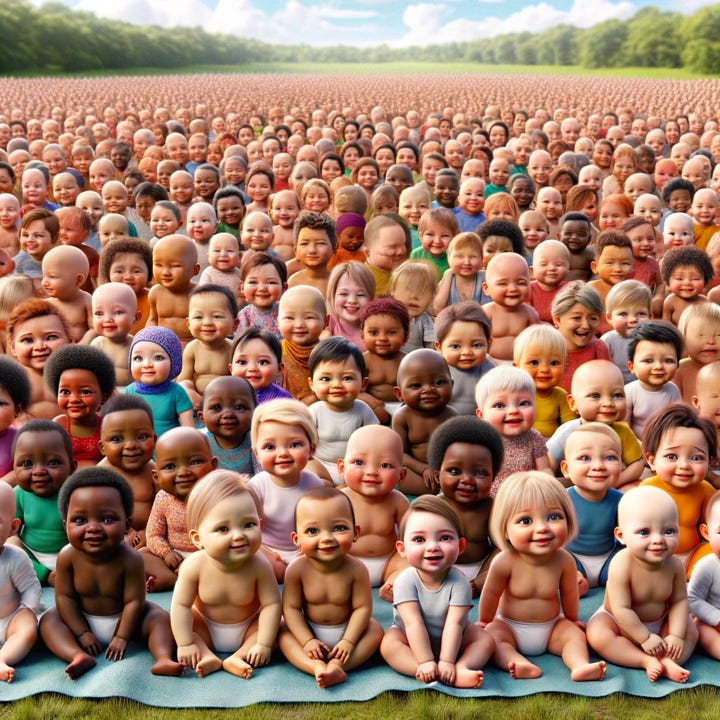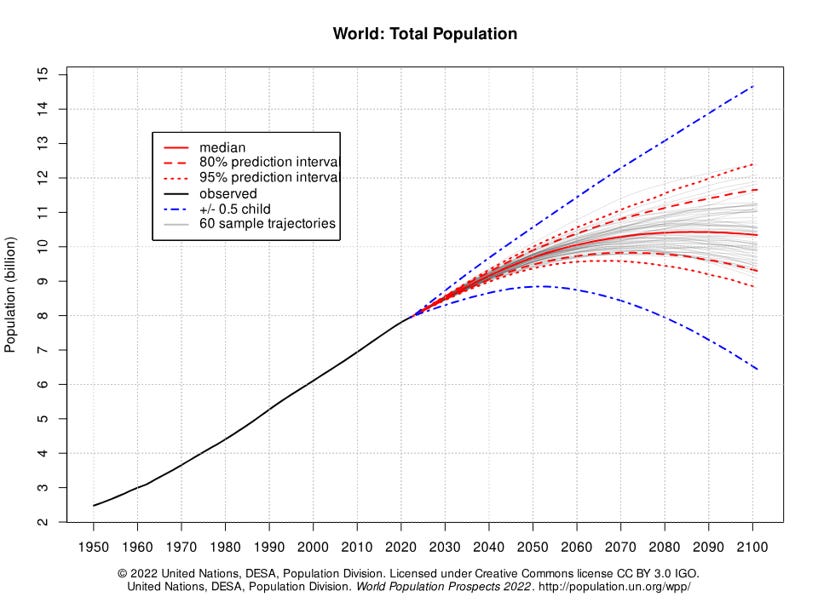Birth Dearth or Baby Boom?
A new debate on where global population may be headed

Writing in the Wall Street Journal earlier this week Greg Ip and Janet Adamy explored the possibility that the world’s population may peak and begin to fall far sooner than demographers have previously projected:
The world is at a startling demographic milestone. Sometime soon, the global fertility rate will drop below the point needed to keep population constant. It may have already happened.
Fertility is falling almost everywhere, for women across all levels of income, education and labor-force participation. The falling birthrates come with huge implications for the way people live, how economies grow and the standings of the world’s superpowers.

The United Nations, in its World Population Prospects 2022, projected in its medium variant scenario that global population would peak in the 2080s at about 10.4 billion people. The WSJ reports that figure represents a substantial drop from U.N. projections just five years earlier: “In 2017 the U.N. projected world population, then 7.6 billion, would keep climbing to 11.2 billion in 2100.”
The Institute for Health Metrics and Evaluation (IHME) at the University of Washington in 2020 projected a global population in 2100 of about 1.5 billion less than the United Nations:
In the reference scenario, the global population was projected to peak in 2064 at 9.73 billion (8.84–10.9) people and decline to 8.79 billion (6·83–11·8) in 2100.
Both the U.N. and IHME foresee projected 2100 population to be less than demographers had previously projected. The trend in population projections for these organizations is down.
In contrast, the International Institute for Applied Systems Analysis (IIASA) in a recent update to its Shared Socioeconomic Pathways scenarios increased its 2100 population projection by more than 1 billion people in its “middle of the road” scenario:
…click on the above link to read the rest of the article…